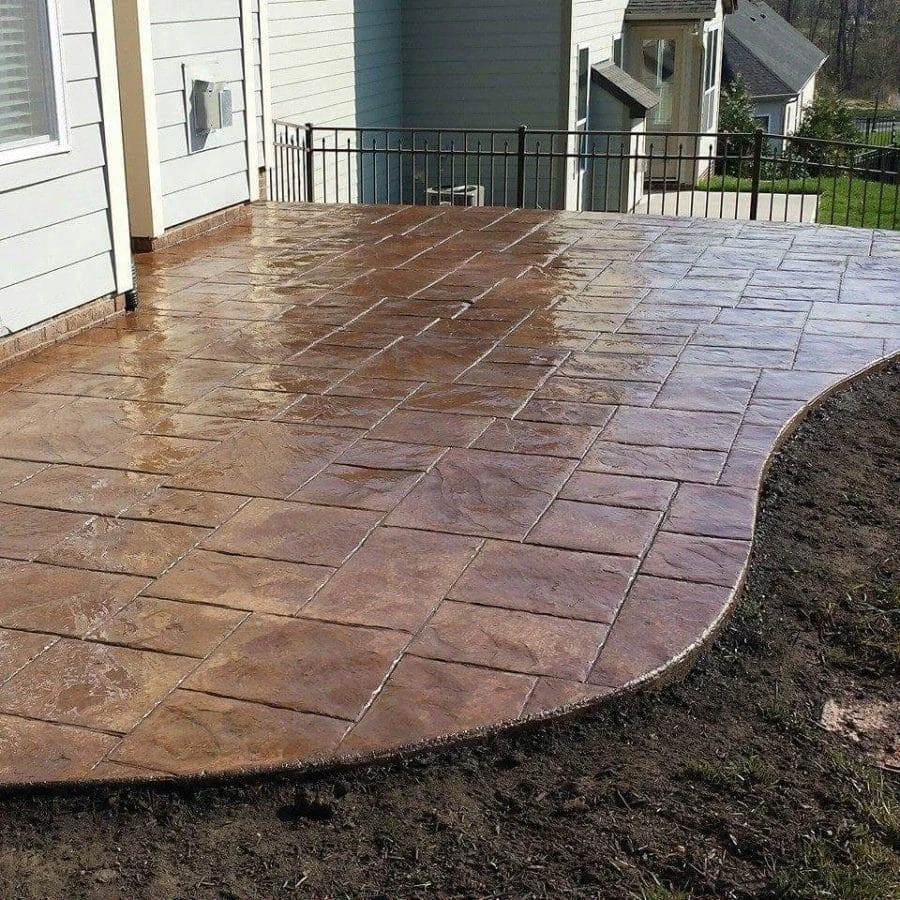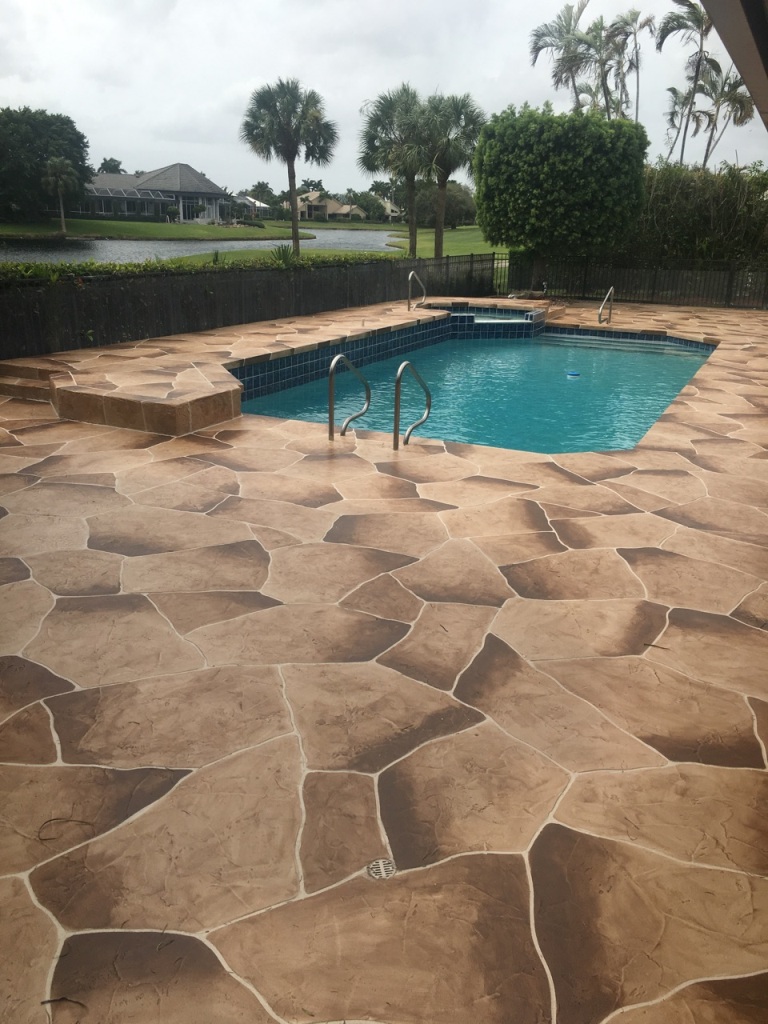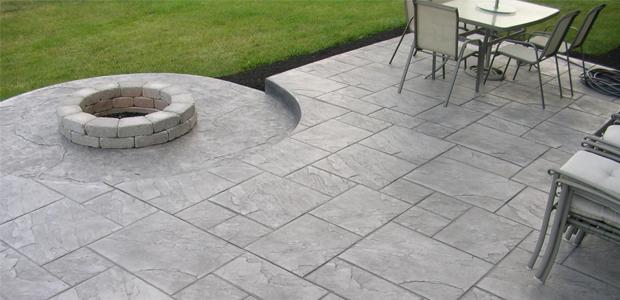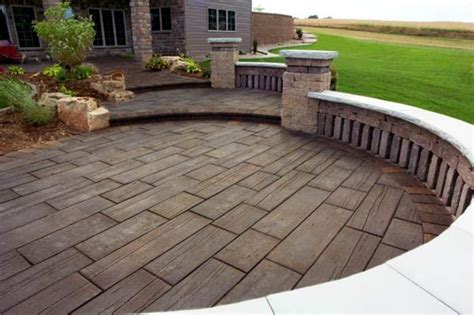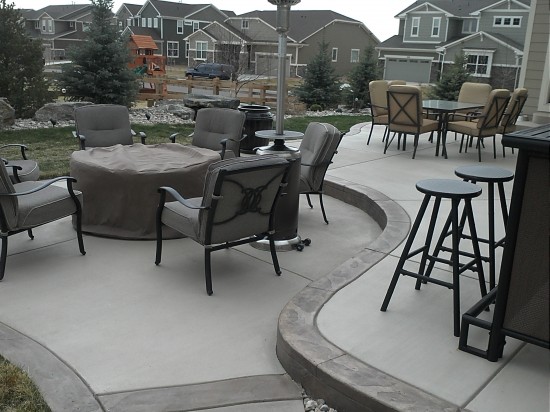What Is The Lifespan Of Stamped Concrete?
Concrete has been a popular choice for building materials since the dawn of civilization. It is now used in many forms, from traditional poured concrete to stamped concrete – providing a durable and aesthetically pleasing surface that can stand the test of time. But how long does stamped concrete last? How much wear and tear will it withstand before needing to be replaced? In this article, we explore the lifespan of stamped concrete and discover how you can make sure your surface stands strong against Mother Nature’s elements.
Stamped concrete has become increasingly popular over recent years due to its ability to mimic natural paving surfaces such as stone or brick. This type of decorative material provides an attractive addition to driveways, patios, pool decks, walkways and other outdoor areas. The secret behind its longevity lies in its strength – achieved by mixing cement with aggregates and water before stamping it into desired shapes with specialized moulds. When cured correctly, stamped concrete offers superior durability compared to other exterior floor finishes.
When exposed to harsh weather conditions or extreme temperatures, however, even the toughest materials require maintenance. So what are some factors that affect the lifespan of stamped concrete? And how can you ensure your project lasts for years without requiring repairs? Read on for answers to these questions and more about maintaining your stamped concrete surface.
Stamped Concrete Life Expectancy Is 25 Years
The incredible durability of stamped concrete has made it the go-to choice for many outdoor design projects. Its life expectancy is an astonishing 25 years, and this remarkable resilience makes it a superior option when compared to other hardscaping materials such as pavers or traditional, poured concrete. This staggering longevity means that your stamped concrete project will last far beyond its initial installation – providing beauty, utility and peace of mind for decades to come!
Due to its long lifespan, stamped concrete requires little maintenance over the course of its lifetime. While regular sealing can help extend the life of any concrete surface, stained and sealed stamped concrete needs minimal care in order to retain its original vibrancy and luster. After all, no one wants their carefully designed stamped concrete patio to look dull and faded after just a few short years! Regular cleaning with mild soap and water is usually enough to keep your patio looking like new.
Coupled with its durable nature, stamped concrete also offers unparalleled versatility when it comes to shape and color options. With proper planning, you can create virtually any look imaginable with colored stains – from rustic brick patterns to sleek modern designs – all while making sure that your investment remains strong through time. Stamped Concrete truly stands out among the rest; offering unrivaled strength against wear and tear while still allowing homeowners to express their creativity through imaginative design choices.
What Affects The Lifespan Of Stamped Concrete?
The life expectancy of stamped concrete is a key factor in determining whether to use it for a surface or not. Stamped concrete can last up to 25 years if properly maintained, but the lifespan may vary depending on the situation and environment. Factors such as foot traffic, climate conditions, cleaning methods, sealers used, and installation techniques all impact how long stamped concrete will last.
One critical factor that affects the longevity of stamped concrete is regular maintenance. Failing to clean and reseal surfaces with high foot traffic regularly can reduce their lifespan significantly. Other issues such as exposure to harsh chemicals or frequent freeze-thaw cycles could also decrease the life span of stamped concrete.
In comparison, pavers are considered more durable than stamped concrete when exposed to extreme temperatures or heavy loads due to their interlocking design; however, they require more maintenance since weeds need to be removed from between them. Ultimately, understanding what affects the lifetime of a material like stamped concrete is essential for making informed decisions about which type of flooring would be best suited for any given project.
How To Make Stamped Concrete Last Longer
To make stamped concrete last longer, one must be willing to embark on a journey of proper installation and maintenance. To best illustrate this process, imagine you are standing in front of a beautiful home with an inviting concrete patio that was recently installed using stamped concrete technology. The homeowner is proud of the new addition to their property and wants it to remain looking its best for as long as possible.
The key to making stamped concrete last longer is ensuring that it has been properly installed and maintained throughout its lifespan. This includes applying sealants every two years or so, regularly inspecting the surface for any signs of wear and tear such as cracks or fading colors, and cleaning up spills promptly. Additionally, if there are areas where water tends to pool, those sections should be addressed before further damage can occur by sealing them off with additional layers of sealant or waterproofing material. Doing these things will help ensure that your stamped concrete patio lasts for many years without needing costly repairs or replacements down the line.
Each step taken towards keeping your stamped concrete looking its best will result in more years spent admiring your investment from afar – all while saving money at the same time! With some patience and attention paid to detail when installing and maintaining your newly-laid stamped concrete surface, you can extend the lifecycle significantly compared to not taking any action at all.
How To Winterize Stamped Concrete
Stamped concrete is a decorative form of concrete often used for patios, driveways, and other outdoor surfaces that can add an aesthetically pleasing touch to any home. Surprisingly, however, it does not last forever — no matter how much effort goes into its installation or maintenance. Winterizing stamped concrete is essential in order to extend the lifespan of this material as long as possible.
The process of winterizing stamped concrete begins with preparing the surface by cleaning off loose debris and dirt from the area. This will ensure that all cracks and crevices are visible so they can be sealed properly. Afterward, silicone-based sealers should be applied liberally over all areas where water may collect during the colder months such as around steps, pools, fountains, and any other potential points of leakage. Additionally, applying a coat of wax to the entire surface helps protect against UV damage throughout the year.
For those looking to save on costs while still protecting their investment in decorative concrete stamps, using a layer of mulch or gravel between walkways and flower beds creates an extra barrier from freezing temperatures without breaking the bank. Furthermore, paying close attention to snow removal is also important; shoveling away excess accumulation before it has time to melt and freeze again keeps pathways safe while preventing further wear on your beautiful stamped concrete cost project.
How To Maintain Stamped Surfaces
Maintaining stamped concrete surfaces is a crucial step in ensuring the longevity and value of your home. These surfaces, while having relatively long lifespans compared to other materials, need proper maintenance if they are to remain restored to their original condition. When considering the lifespan of stamped concrete, it is important to understand how best to maintain its surface over time.
The first step in maintaining any stamped concrete surface is regular cleaning. This removes dirt and debris that can accumulate over time and cause damage or discoloration. It also helps prevent mildew growth which can further degrade the material’s integrity. In addition, sealing the stamped concrete will help protect it from UV rays and moisture which can lead to cracking or fading as well as preventing staining from oil or grease spills. Applying sealant should be done every two years for optimal results.
Repairing damaged areas quickly is another key factor when looking at the lifespan of stamped concrete surfaces. Over time these surfaces may experience wear or even structural problems due to shifting soil beneath them but taking action early on can often restore them back to working order with minimal effort required. Additionally, inspecting regularly for such damages is an effective way of catching any issues before they worsen significantly, thus prolonging the life of your investment and adding value to your home overall.
In summary, properly maintained stamped concrete surfaces have a high potential for lasting many years without needing significant repairs or replacements – provided that routine cleaning and sealing as well as prompt repair work occur throughout its lifetime. By following these steps, homeowners can ensure that their investment lasts longer and maintains its original aesthetic appeal.
5 Tips For Maintaining Stamped Concrete
Stamped concrete is a popular choice for many home and business owners due to its versatility, durability, and aesthetic appeal. However, in order to ensure that stamped surfaces last longer, there are certain maintenance tips that should be kept in mind. Properly maintaining stamped concrete can help extend the lifespan of this surface significantly.
From sweeping regularly to sealing pavers, these five simple steps will make sure your stamped concrete stands the test of time: First, it is important to sweep away dirt and debris on a regular basis as any build-up may cause damage over time; second, use only mild detergents when cleaning the area – harsh chemicals may discolor or corrode the surface; third, repair any cracks before they worsen with special fillers; fourth, protect against stains by applying sealant every two years; fifth, inspect for signs of wear and tear such as fading color or crumbling edges and address them immediately.
Following these tips can help maximize the life expectancy of your stamped concrete while also keeping it looking fresh and new for years to come. Regular upkeep not only improves the overall look but also helps prevent costly repairs associated with neglecting proper maintenance procedures. Focusing on preventive measures can keep your stamp concrete lasting longer than expected while increasing your return on investment considerably.
Does Stamped Concrete Need A Concrete Sealer?
Stamped concrete has become a popular choice for patios and other outdoor spaces, thanks to its attractive appearance and relatively low initial cost. However, the complexity of the job means that it is essential to consider how long stamped concrete will last in order to get maximum value from your patio. Does stamped concrete need a concrete sealer?
The answer is yes – sealing can help make your stamped concrete patio last longer by minimizing damage from water penetration or chemical spills. Sealers also enhance the color of the material itself, giving it greater visual appeal over time. Applying this protective layer requires careful consideration; if done incorrectly it may lead to further deterioration of the surface.
When considering whether sealed stamped concrete is right for you, take into account not only the additional expense involved but also the average lifespan which can be achieved with proper maintenance. If applied correctly, a quality sealant can ensure that your investment in stamped concrete pays off in both style and durability. Ultimately, while there are some upfront costs associated with sealing your patio, they can often be offset by an extended period of use before repairs or replacements are needed – making them well worth the effort for many homeowners looking for a timeless look without extra hassle down the road.
Longevity And Durability
Stamped concrete is renowned for its longevity and durability, like a rock in the face of time. Its strength lies not only in its ability to last but also in being able to stand up to harsh weather conditions. This makes stamped concrete an excellent choice when it comes to outdoor paving projects. Concrete can also be used indoors, as well as on driveways, walkways, patios, and decks.
When compared with other materials such as brick pavers and natural stone, stamped concrete would come out ahead if you are looking for something that will last a long time without needing additional maintenance or repair work done on it. While these materials might need a sealant every two years or so, stamped concrete can remain intact for decades without any extra treatment needed. The color pigments added during installation help ensure that the colors won’t fade over time due to sun exposure or inclement weather.
Given its high-quality finish and remarkable endurance against harsh elements and wear and tear, stamped concrete provides homeowners with an attractive yet cost-effective way of sprucing up their home’s exterior spaces while still keeping them safe from the elements and ensuring they look good for many years down the road.
Conclusion
The longevity and durability of stamped concrete make it an attractive option for outdoor flooring. It is estimated that a well-installed, properly maintained stamped concrete surface can last up to 25 years. This long lifespan makes stamped concrete an ideal choice for many homeowners looking to extend the life expectancy of their outdoor surfaces and create aesthetically pleasing results with minimal maintenance requirements.
To maximize the life span of stamped concrete, proper installation techniques, winterization measures, regular cleaning, sealing when necessary, and avoidance of harsh chemicals are all key components in maintaining these surfaces. If kept free from excessive wear and tear due to weather conditions or other activities such as vehicle traffic, a homeowner can expect to enjoy the beauty of their stamped concrete for two decades or more before any major repairs may be needed.
One interesting statistic worth noting is that decorative concrete products require only 10% – 15% maintenance over their lifetime compared to the traditional pavement which requires 20%-25%. Therefore, investment in a quality product like stamped concrete will save time and money while providing lasting value to one’s property.

